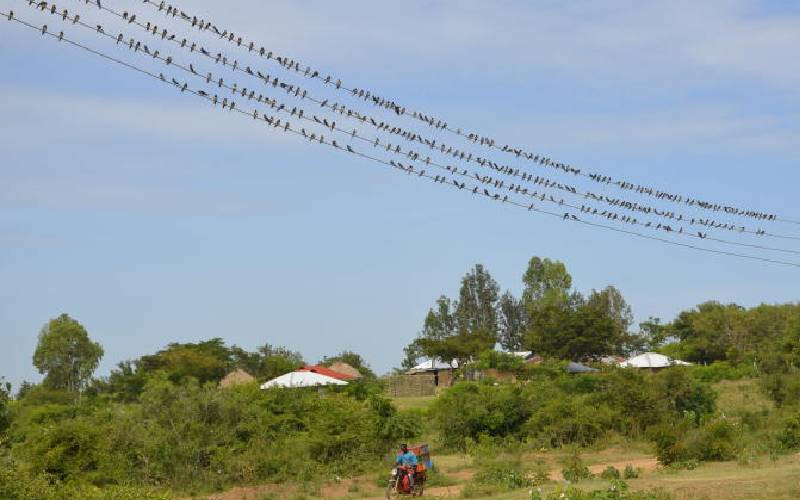
Despite significant efforts in wildlife management, Kenya’s focus has largely overlooked vulnerable bird species such as raptors, bustards, flamingos, and cranes.
Kenya has made major strides in expanding electricity access, with renewable energy central to its development and climate agenda. Solar, wind, and transmission infrastructure are growing rapidly, reflecting global and national commitments to decarbonisation. However, this progress carries unintended ecological risks.
“Power lines and wind farms cause bird electrocutions, collisions, and habitat fragmentation, threatening vulnerable species. These impacts are well-documented globally, but remain largely absent from Kenya’s wildlife and energy policies,” a study conducted between 2021 and 2024 by Strathmore University’s Centre for Biodiversity Information and Development reveals.
The study highlights the urgent need to integrate bird-safe infrastructure into Kenya’s policy framework.
“Current strategies focus on human–wildlife conflict, poaching, and habitat degradation, but ignore infrastructure growth. With Kenya’s energy masterplan envisioning continued network expansion, this policy gap undermines conservation gains and international obligations,” note Dr David Chiawo and Dr Peggy Ngila, lead researchers.
The study explains that overhead power lines harm birds through collisions, electrocutions when perching completes electrical circuits, and habitat fragmentation. Across Africa, including Sudan, South Africa, and Kenya, bustards, flamingos, raptors, and cranes are most affected. These incidents threaten populations, disrupt electricity supply, and incur costly outages.
Due to the absence of electrocution and collision risks in Kenya’s biodiversity and energy frameworks, the study recommends immediate reforms. Wildlife safeguards should be integrated into the Wildlife Act, National Biodiversity Strategic Action Plan (NBSAP), and energy licensing processes. “Power utilities and renewable energy developers must adopt bird-safe technologies such as line insulation, strategic pole design, and line marking. Embedding these standards in the Energy Act and EMCA will reduce outages, demonstrate climate-responsiveness, and strengthen Kenya’s leadership in sustainable infrastructure,” the researchers advise.
They also recommend revising wildlife strategies to explicitly address infrastructure-related risks. This will align national policy with the Convention on the Conservation of Migratory Species, the Convention on Biological Diversity, and constitutional obligations under Article 69 on environmental stewardship.
A joint task force of the Ministry of Energy, Ministry of Tourism and Wildlife, Kenya Electricity Transmission Company, Kenya Power and Lighting Company, NEMA, academia, and conservationists should harmonise policies with the African Union’s Agenda 2063. This ensures renewable energy expansion aligns with biodiversity targets under the Global Biodiversity Framework.
The study concludes that mainstreaming bird-safe infrastructure into energy and environmental policies will make Kenya’s renewable energy future both climate-smart and biodiversity-safe—a win for nature, communities, and sustainable development.







